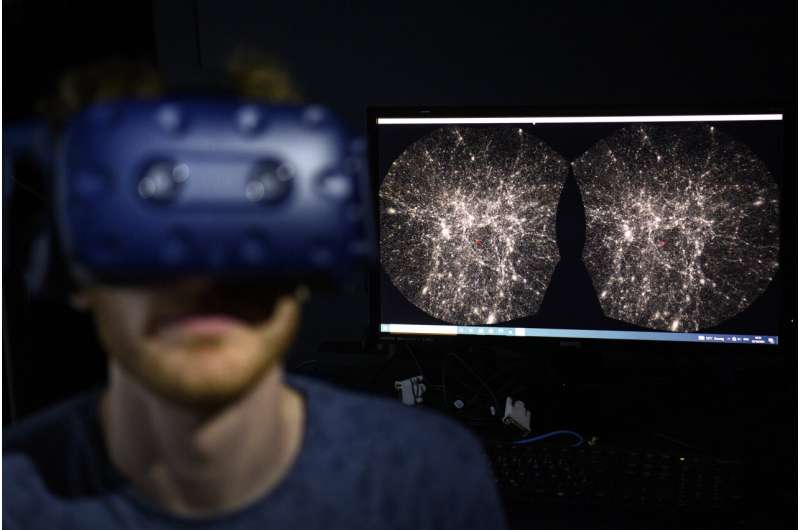
IndustryTrends Published on: 07 Mar 2025
Collected at: https://www.analyticsinsight.net/white-papers/the-future-of-security-advancements-in-ai-facial-recognition-technology
As new security challenges emerge globally, AI-driven facial recognition is revolutionizing identity verification and surveillance. From law enforcement to banking, this technology enhances accuracy, efficiency, and public safety. AI-driven biometric solutions are now available in airports, smart cities, and workplaces, providing convenient and secure solutions.
However, concerns regarding privacy, bias, and governance remain significant. This white paper explores the transformative potential of AI facial recognition, its applications, ethical considerations, and a roadmap for secure and responsible usage.
AI and the Next Era of Security
Security has changed from relying on physical barriers to utilizing AI-driven protection, significantly improving efficiency and accuracy. Traditional methods used to depend on human oversight, which was often reactive and slower to respond. In contrast, today’s AI-powered systems analyze data in real time, allowing the detection of threats before they escalate.
Technologies such as facial recognition, object detection, and predictive analytics enable proactive security measures. This shift changes surveillance from passive monitoring to active prevention, ensuring faster and more precise responses. As threats become increasingly complex, AI-driven security provides unmatched adaptability, helping to safeguard individuals and organizations in a constantly evolving digital landscape.
AI Facial Recognition
AI-driven facial recognition is a powerful biometric system that identifies or authenticates individuals by analyzing their facial features. The process involves capturing a video or an image frame, mapping out unique facial characteristics, and converting them into a mathematical representation known as a “faceprint.” The system then compares this faceprint against a database to verify the individual’s identity. Due to its speed, accuracy, and touchless operation, AI-driven facial recognition is becoming increasingly widespread in various fields, including security, law enforcement, financial transactions, and customer verification.
Growing Importance of Role of Facial Recognition
Facial recognition technology is transforming identification and security across various sectors. Governments use it to secure borders, while police can track suspects in real-time. In the business world, it helps prevent fraud, manage secure access, and enhance tailored client experiences. This technology is also prevalent in smartphones, finance, and smart cities, highlighting its versatility. However, ethical concerns, data protection, and privacy issues remain significant challenges that need to be addressed. Striking a balance between innovation and responsible use is crucial for ensuring both technological advancement and the protection of human rights.
Advancing Biometric Identification with AI
Facial recognition powered by AI has significant advancements in capability and precision:
1. Face Detection: Computer vision with AI separates and recognizes facial features from a video or image.
2. Feature Analysis: Maps key nodal points of individuals and analyzing unique facial structures for accurate identification.
3. Faceprint Generation: Translates facial features into numbers, generating a digital identity.
4. Identity Verification: Cross-checks created faceprints against existing profiles for authentication.
5. Enhanced Accuracy: Facial recognition is fueled by deep learning, minimizing false positives.
6. Real-Time Processing: Supports real-time recognition in live video streams for security applications.
7. 3D Technology Integration: This incorporates depth analysis to enhance recognition independent of altering conditions.
8. Adaptive Recognition: Provides accurate identification regardless of changes in light, obstructions, or facial orientation.
How AI Facial Recognition work?
AI facial recognition utilizes advanced technologies such as machine learning, deep learning, and neural networks to improve the accuracy of identifying individuals. The process begins by recognizing and scanning facial features, which are then converted into a unique faceprint. This faceprint is matched against a database for verification, making authentication straightforward in most cases. As AI learns from more data, facial recognition performance becomes increasingly optimized, resulting in fewer errors and greater reliability.
Furthermore, real-time processing enables instant identification in high-security environments, such as law enforcement and finance. Adaptive recognition ensures precision even when there are variations in lighting, angles, or obstructions. Therefore, AI-based facial recognition is an essential tool for enhancing security in today’s world.
Key Technologies of AI-Driven Facial Recognition
AI face recognition utilizes advanced technologies to enhance accuracy, security, and performance. The combination of machine learning, neural networks, and biometric verification ensures effective identification under standard conditions.
Machine Learning (ML): Develops face patterns from scanning gigantic databases and increasing precision through continuous learning. It’s now building enhancements in low-level facial variability detection, i.e., expression and aging.
Neural Networks: Utilizes Convolutional Neural Networks (CNNs) to break down images and split every facial feature into numeric faceprints. Optimized protocols achieve maximum speed, accuracy, and the least computation load.
Deep Learning: Uses multi-layer neural networks to search high-dimensional data sets for even identification. It delivers even identification even in heterogeneous scenes like low light and angle variation.
Computer Vision: Detects and examines faces in photos or video by extricating human facial features from the other objects. It constructs salient facial features to accurately position them.
Biometric Analysis: Detects around 80 facial nodal points and plots them onto an individualized math faceprint. This enables a speedy and accurate comparison of faces to verify.
3D Imaging & Infrared Sensors: Retains depth information to touch with accuracy under different lighting environments. Infrared sensors offer low-light sensitivity and system dependability.
Pros and Cons of AI Facial Recognition Technology in Security
AI facial recognition enhances security at the cost of ethics in place of speed and accuracy at the expense of invasion of privacy, bias, and abuse.
Pros of AI Facial Recognition Technology
1. Facial identification guarantees security by accurately identifying individuals, preventing unauthorized access, and tracing suspects in risky areas.
2. Automated systems discard human errors by discarding human observation errors, bringing more accuracy to security interventions.
3. Touchless identification ensures touchless easy identity checks without any surface touch, enhancing sanitation and space ease on private and public properties.
4. AI monitoring allows faster detection in crowded places, bypassing the cost and inefficiency of human monitoring to a great extent.
5. Biometric verification prevents identity fraud and impersonation during financial transactions and offers secure access to internet resources.
Cons of AI Facial Recognition Technology
1. Privacy is violated as face recognition technology captures and preserves biometric data without an overt statement from the user.
2. Discriminatory treatment and misidentification are enabled by bias in AI, notably for some groups such as minorities and women.
3. Compromise poses security problems in that leakage of sensitive biometric data, identity theft, and privacy violations are possible.
4. Compromise poses ethics problems in that lack of control results in mass surveillance, oppression of dissidents, and abuse of human rights.
5. It is not secure to be dependent on technology since mechanical failure or viruses can undermine security operations and fail to detect real threats.
Revolutionizing Industries: The Power of AI Facial Recognition
AI facial recognition technology is enhancing security, simplifying processes, and increasing speed. It streamlines verification, significantly reducing the need for traditional identification methods. Businesses utilize this technology for automation, fraud prevention, and improving customer experiences.
Moreover, public spaces benefit from risk detection and real-time surveillance, enhancing safety. In healthcare, facial recognition is used to accurately identify patients, and it also provides secure access to online services. However, despite its advantages, concerns such as privacy issues, discrimination, and data protection arise. The safe and ethical use of this technology relies on responsible innovation, the development of ethical AI technologies, and appropriate regulation.
Future Trends of AI-Driven Facial Recognition
The future of facial recognition holds promising innovations that ensure greater accuracy, security, and speed. Recent advancements in AI technology are being utilized by governments and organizations to develop more efficient and precise systems.
Next-Generation AI Models: Unmatched Precision
The latest artificial intelligence-based facial recognition technology is achieving unprecedented levels of accuracy, even surpassing human capabilities. Innovations in computation, combined with deep learning, have raised accuracy levels to over 99% in laboratory tests.
Facial recognition models such as VGG-Face, FaceNet, and ArcFace are enhancing this accuracy by improving feature extraction and recognition algorithms. However, to maintain this high level of accuracy, ongoing improvements are necessary in data quality, model training, and preprocessing methods.
3D & Partial Face Recognition
3D and partial face recognition technology are transforming the business environment. 3D facial recognition captures the shape of the face using depth sensors, allowing it to recognize individuals even in low light or when their expressions change. In real-world applications, partial face recognition can accurately identify individuals even when parts of their faces are obscured, focusing on key features such as the forehead and eyes. This technology offers a more secure and convenient means of authentication, making it particularly effective in dynamic and uncontrolled environments.
Seamless Integration with Multi-Biometric Systems
Facial recognition technology is becoming more advanced by integrating additional biometric authentication methods to enhance its security and reliability. Multi-factor authentication includes facial recognition, fingerprint scanning, iris scanning, and voice authentication, all of which improve access control.
Furthermore, hybrid biometric systems utilize multiple biometric traits to provide greater accuracy. This approach helps reduce false positives and minimizes identity fraud. Hybrid systems enhance security across various sectors, including healthcare, banking, law enforcement, and border control, allowing for secure yet transparent identification.
AI-Powered Predictive Security & Risk Assessment
Artificial intelligence enables predictive threat detection more swiftly for better risk management. Predictive security uses AI-driven algorithms for real-time monitoring of behavioral trends and advanced threat prediction.
Moreover, AI-based risk assessment combines facial recognition with analytics to identify potential security threats in real time. This allows agencies and organizations to assess individuals who may pose a risk based on their historical behavior. By shifting from a reactive to a proactive approach, this technology represents the future of operational efficiency and public safety.
Navigating the Ethical and Regulatory Landscape of
Facial recognition technology offers significant benefits, but it also raises important ethical and regulatory concerns. Issues such as mass surveillance, unauthorized tracking, and data breaches pose serious threats to privacy. Biometric data, once compromised, cannot be changed, making its security crucial. The concept of function creep—using collected data for purposes beyond its original intent—further increases risks, which highlights the need for responsible deployment to maintain public trust.
Moreover, AI-driven facial recognition systems are sometimes biased, disproportionately affecting marginalized groups due to unbalanced training datasets. To address this, it is essential to use diverse data, conduct continuous auditing, and implement human oversight. Establishing transparent policies, ethical guidelines, and explicit consent mechanisms is vital for ensuring fairness, accountability, and the ethical adoption of facial recognition technology.
Conclusion
Facial recognition technology, fueled by AI, elevates security standards with improved precision, faster response times, and real-time threat alerts. Governments and businesses leverage deep learning and multi-biometric systems for law enforcement, financial security, and fraud prevention. Innovations like 3D facial mapping, partial face analysis, and AI-driven predictive security enhance adaptability across industries.
However, ethical concerns such as privacy violations, algorithmic bias, and potential misuse highlight the need for evolving regulatory frameworks. It is essential to ensure transparency, fairness, and accountability for responsible technology deployment. Striking a balance between innovation and ethical responsibility is crucial for maintaining public trust. Future advancements will require collaboration among policymakers, technology leaders, and society to protect individual rights while enhancing security measures.

Leave a Reply